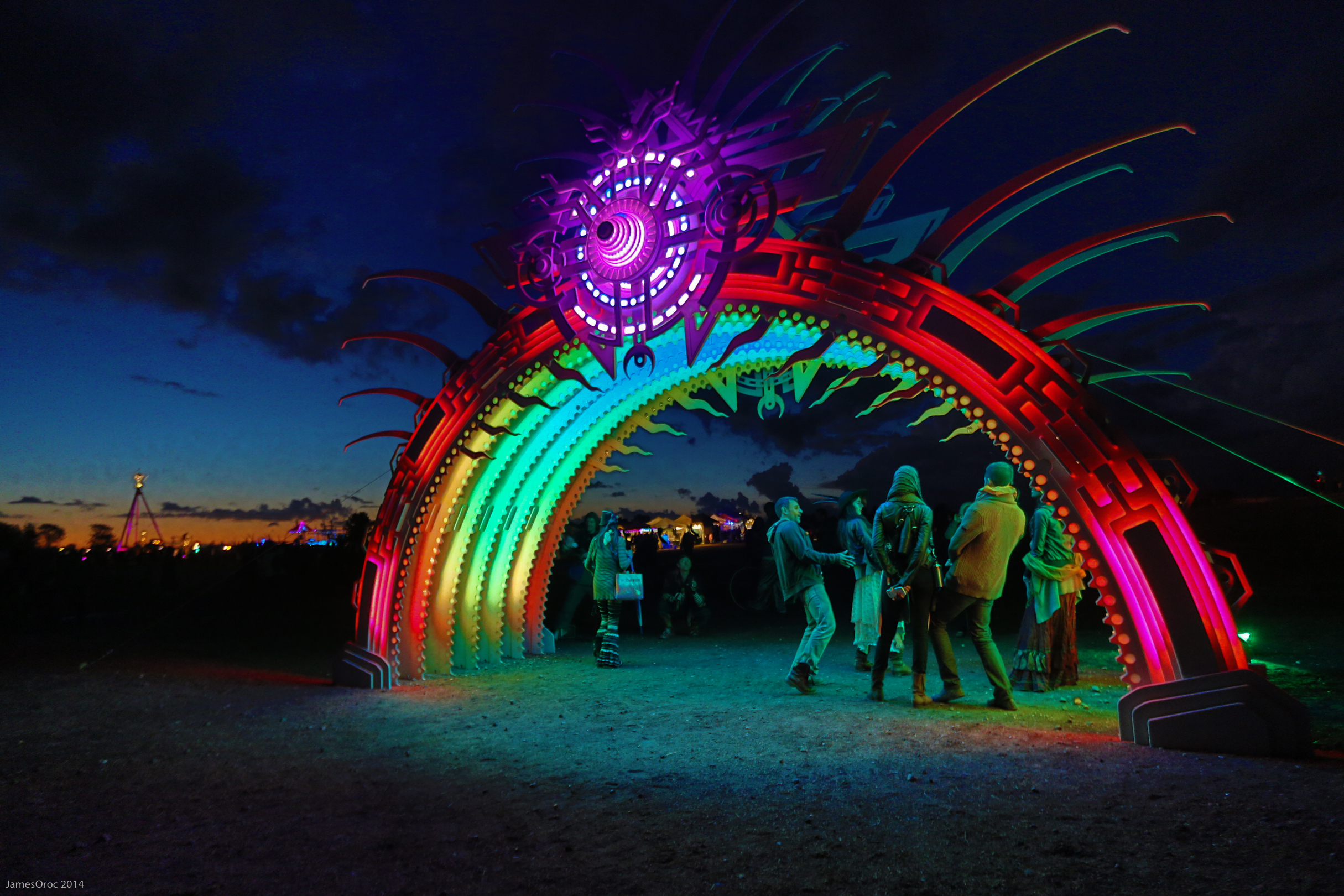The first of a 5-part series examining the state of contemporary psychedelic culture through the contributions of its principal architects: Alexander ‘Sasha’ Shulgin, Terence McKenna, and Alex Grey.
In November of 2000, a DEA sting dubbed ‘Operation White Rabbit’ arrested William Leonard Pickard and Clyde Apperson while they were moving an alleged LSD production laboratory from a renovated Atlas-E missile-silo in Wamego Kansas to an undisclosed location. Many questions remain regarding the case and the involvement of the DEA’s informant Todd Skinner[1], and the DEA now claims that no LSD was ever produced at this silo. But both statistical analysis and anecdotal street-evidence agree with the DEA’s claim that this one ‘bust’ resulted in a 95% drop in the world’s LSD supply at that time, making it seem possible that there might actually be ‘An End to Acid’.
A year later almost to the day (Nov 10th, 2001) LSD’s original Merry Prankster, Ken Kesey, died. With Timothy Leary’s ashes already orbiting in outer space and the Grateful Dead disbanded for more than six years following Jerry Garcia’s death, one could have been tempted to believe that the Psychedelic Revolution that had begun somewhere in the mid-1960’s – with the widespread societal introduction of LSD – had finally come to an end. The world had been changed in many ways thanks to the rediscovery of psychedelics. But like most revolutions, its dreams were never fully met, and its heroes were passing into legend[2].
Ironically, as disrupted and antiquated as the ‘Psychedelic Movement’ may have appeared to be at that moment, the seeds of ‘the Second Psychedelic Revolution’ were already planted more than a decade earlier. These seeds bloomed in the desert of that LSD drought.
This was a profound example of how ineffective prohibition can be at extinguishing interest in a potent substance. The possibility of a world without acid inspired a younger generation to seek out a plethora of alternative psychedelics — some old, some new. In the process, they rediscovered and reclaimed the original entheogenic experience — the mystical taste of the Other, the FLASH outside of space and time — that LSD had provided for the 1960’s pioneers[3].
Now, little more than a decade later, we can witness psychedelic research slowly but surely re-entering the universities and research labs, thanks to: the vision and persistence of Rick Doblin and MAPS[4]; the global spread of the Burning Man meme; the rapid growth of the entwined Visionary Art movement and the transformational Art-and-Music festival culture; Electronic Dance Music, which is the first popular musical form to venerate and popularize psychedelics since the 1960’s; the birth of hundreds if not thousands of websites (Erowid, DMT-Nexus, etc.) that either promote psychedelics or are directly influenced by them; the dizzying number of new books on psychedelics on the shelves (or at least on Amazon); and the greatest array of psychedelics and entheogens — both natural and man-made — that has ever been available to any society in history. It can be said that the psychedelic/entheogenic revolution in Western culture is alive and well. In fact, it is now entering a renaissance.
So how did this Second Psychedelic Revolution come about? What are its goals and its ideals? Are they different from the First Psychedelic Revolution of the 1960’s, or is this just fashion reinventing itself?
As someone who accidentally had his own personal Second Psychedelic Revolution in 2003 after smoking the rare entheogen 5-MeO-DMT purchased legally off the Internet, and as the author of a widely-reviewed book on psychedelics, and as one of the founders of FractalNation[5], a Burning Man camp known for its music-performance-visionary art gallery and speaker series (which has arguably been the high-point of psychedelic culture on the planet for the past three years… more on that later), I believe that I am in as good a position as anyone to examine and help define this shift in our societal attitudes toward the potential of psychedelics, as well as our Movement’s hopes, fears, dreams, and aspirations.
By doing so, I hope to bring greater awareness of the opportunity now presented to us, along with the warning that even as its popularity rises, this Second Psychedelic Revolution is already under threat. I also want to promote the possibility that psychedelics, which once seemed like a formula for instant societal change in the 1960s, may turn out to be a life raft for whatever society manages to emerge from the chaos that population growth and environmental change will undoubtedly wreak on the second half of this 21st century.

The birth of this Second Psychedelic movement began a decade before the Kansas Silo bust with the publication of four very different books in the early 1990’s: Sacred Mirrors: The Visionary Art of Alex Grey (1990); PiHKAL; A Chemical Love Story, by Alexander (Sasha) and Ann Shulgin (1991); and Terence McKenna’s The Archaic Revival and Food of the Gods: The Search for the Original Tree of Knowledge – A Radical History of Plants, Drugs, and Human Evolution (1992). These books would provide the philosophical foundation for this new psychedelic movement. This movement has largely been created by the popularization of a new form of non-stop electronic music that had been percolating around the full-moon parties in Goa, India. By the early 90’s, this music began to spread out to clubs and remote, often desert locations around the world[6]. Also formative was the popularization of the Internet, which for the first time allowed the widespread dissemination of psychedelic culture without fear of censorship or repercussion.
To recap, the five cultural developments that distinguish the Second Psychedelic Revolution from the 1960’s LSD and rock music revolution are:
- The introduction of a wide number of new psychedelic compounds and analogues, and especially phenethylamines from the 2-C family such as 2-CB, 2C-I, and 2C-E.
- The rediscovery of sacred natural plant entheogens, especially ayahuasca, and the publication of simple methods of extracting DMT from plant sources.
- The birth of Visionary Art (which is often a deliberately sacred form of psychedelic art), and its two-decade integration into contemporary festival culture (most notably at Burning Man in the USA and BOOM! in Portugal).
- The emergence of psychedelic trance music that integrated sacred chanting from various cultures with non-stop, repetitive Acid House beats. (May all my Trance DJ friends please excuse this gross simplification.)
- The popularization of the Internet, which allowed for the rapid and widespread dissemination of psychedelic culture.
Anyone who has experienced the worldwide growth of transformational festival culture over the past decade, or stumbled into the Do Lab’s section of Coachella (one of the last great ‘rock’ festivals), attended one of the academic MAPS conferences in California, or the World Psychedelic Forum’s in Basel, Switzerland, or even just surfed the Internet and discovered psychedelic information sites such as Erowid and DMT-Nexus, will easily recognize the influence and prevalence of some, if not all, of these new developments in psychedelic culture. However, during the waning days of the 20th century, and at the end of the First Psychedelic Era if you like, none of these factors were yet popular or commonly known. And while it is somewhat irrelevant to rank the importance of the very different contributions of the three main architects of this new psychedelic age — Alex Grey, Terence McKenna, and Alexander ‘Sasha’ Shulgin — I think that most historians and educated observers would agree that Sasha’s contribution — the publication of PiHKAL and later TiHKAL — was undeniably both the bravest and the most essential first act.
This is the first of a five-part series.
NOTES
[1] Both Pickard and Skinner—the occupant of the silo and allegedly Pickard’s partner —were reputed to have numerous CIA and DEA ties. Pickard apparently got the wrong end of this deal, receiving a double-life sentence for the alleged manufacture of 10 grams of ‘a mixture containing lysergic acid diethylmide’. Apperson received a 30 year sentence, while Skinner walked free, only to be later jailed for 90 years on kidnapping and assault charges. While all the sources involved tell very different versions of the event, it is worth noting that the DEA vastly exaggerated the amount of LSD found (90 kgs of pure LSD; when in fact less than 7 ounces of precursors were found), and have never found any significant money trail which would suggest that Pickard manufactured anywhere near the amount of LSD that Skinner claimed. Pickard, for the record, claims he was a victim of Skinner’s elaborate fantasies.
http://thislandpress.com/gordon-todd-skinner/
[2] Albert Hofmann, the discoverer of LSD, ironically outlived all of them. He died in 2008 at the remarkable age of 102.
[3] These pioneers used LSD at far higher dosages than is common in today’s electronic dance music-driven psychedelic community. Today, a dose of LSD is, on average, between 75-100µg, while a single hit of LSD in 1966 was generally 400µg. Most first time users were encouraged to take ‘two-hits’ if they wanted to experience ‘the white light’!
[4] MAPS; the Multidisciplinary Association of the Psychedelic Sciences.
[5] FractalPlanet in 2013.
[6] The first ‘Goa-Trance’ party in London was in 1990. Burning Man moved from Baker Beach, San Francisco to Black Rock Desert in 1991; there were 250 participants.















